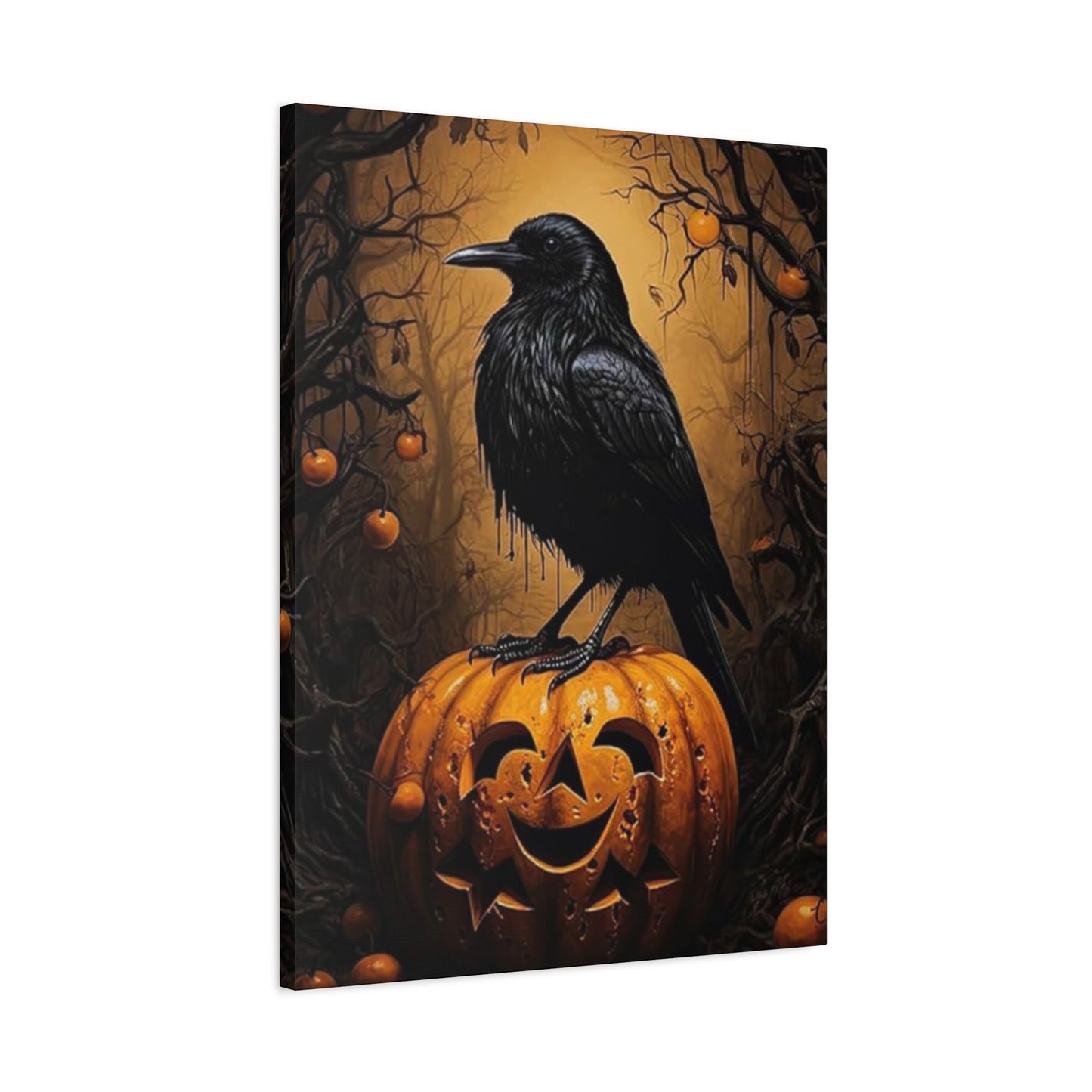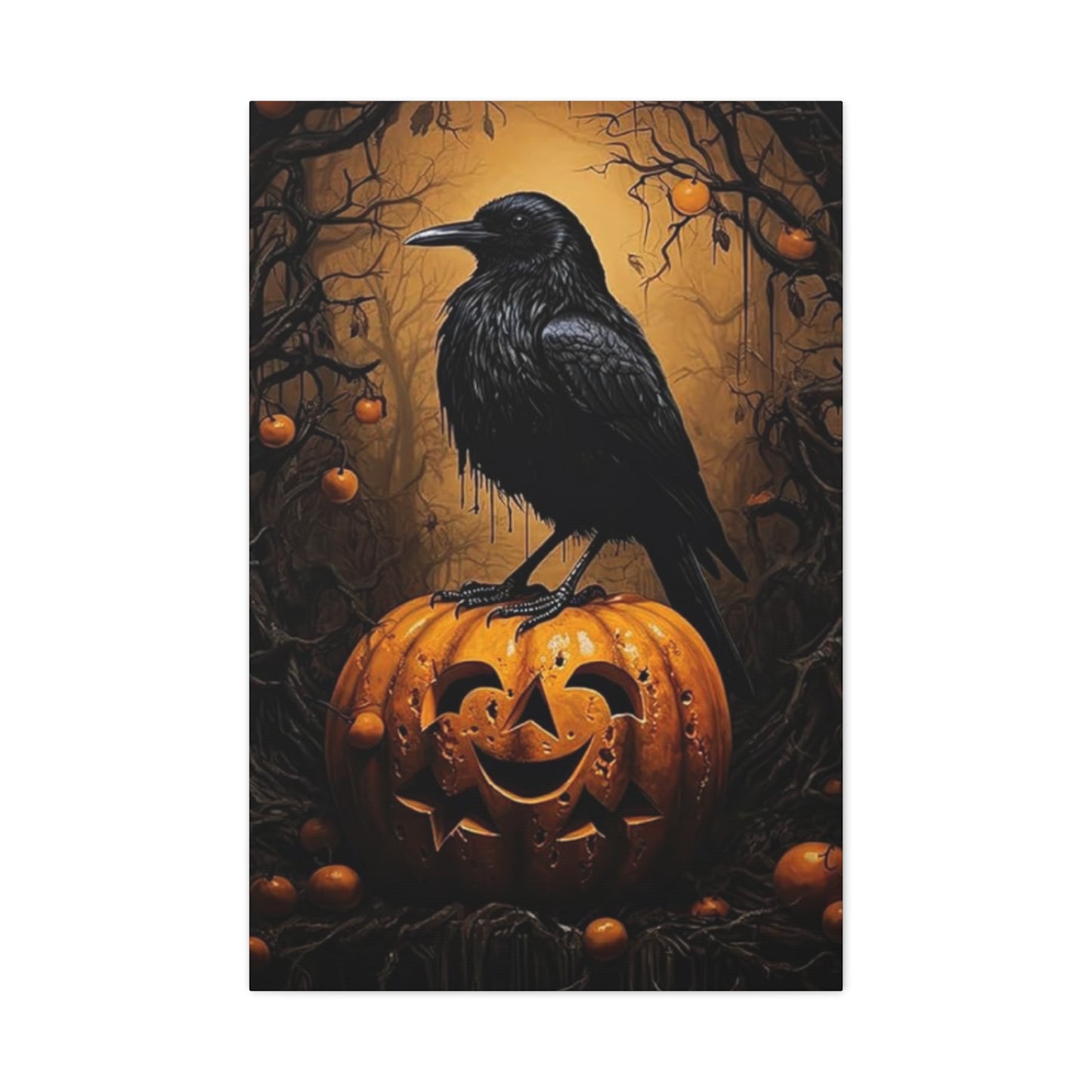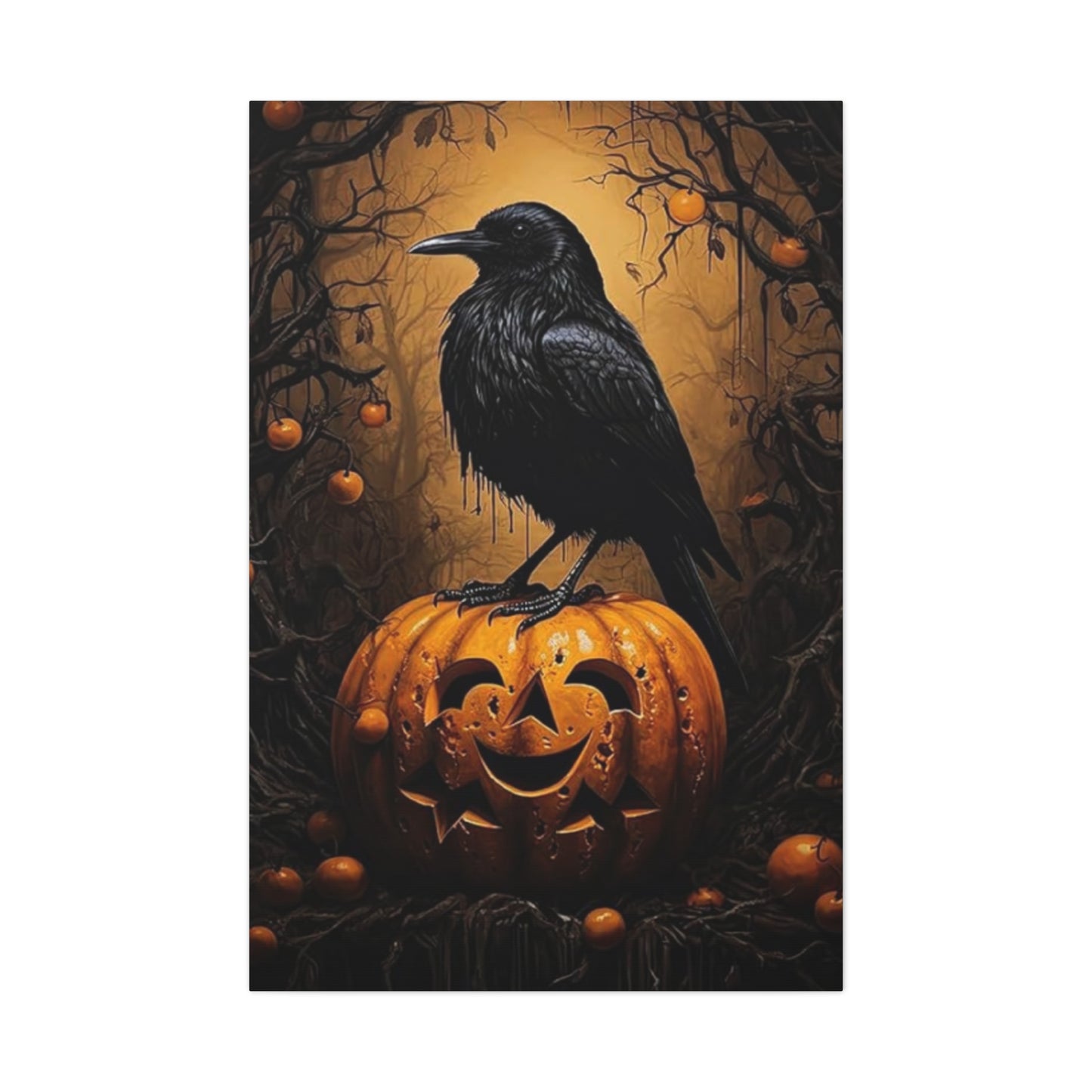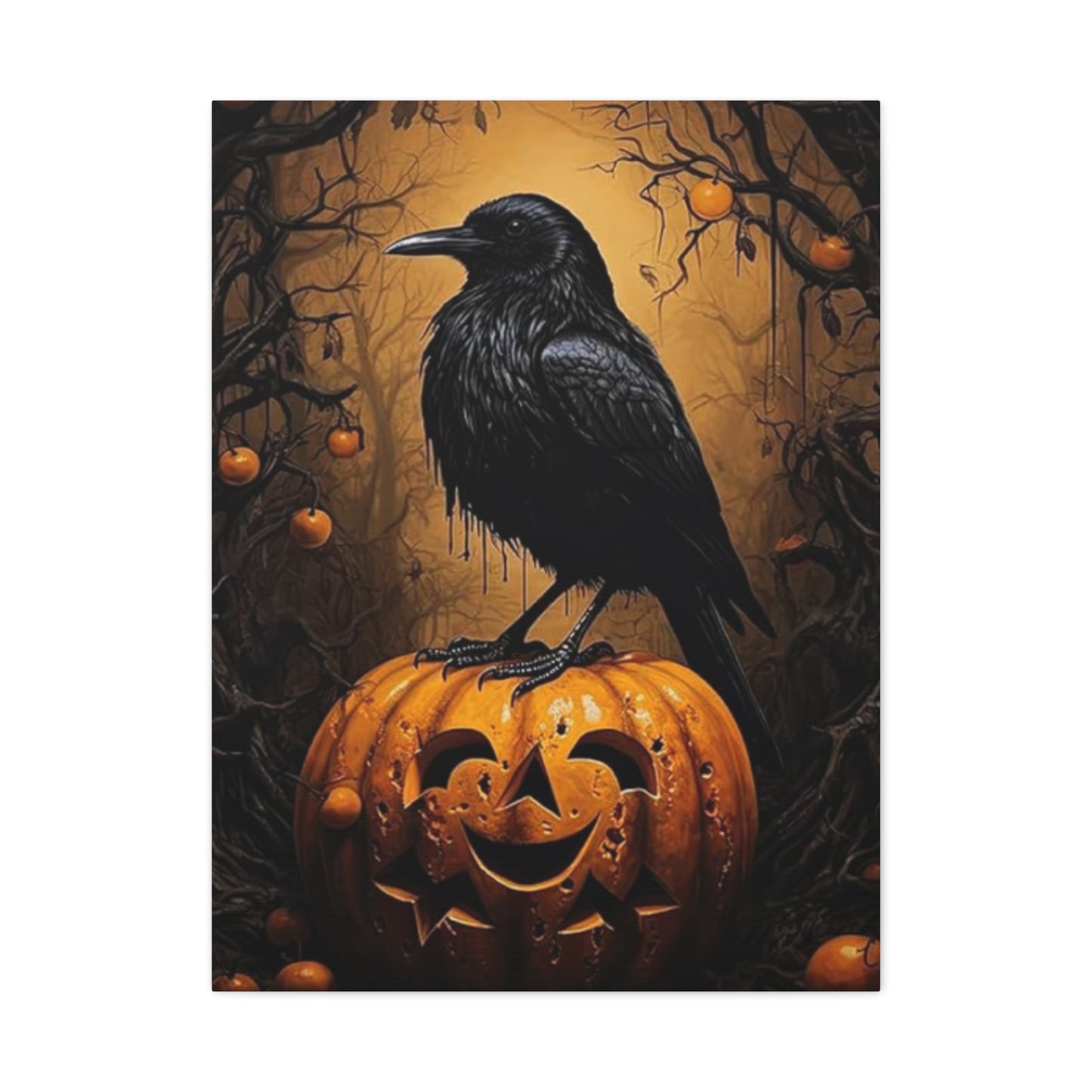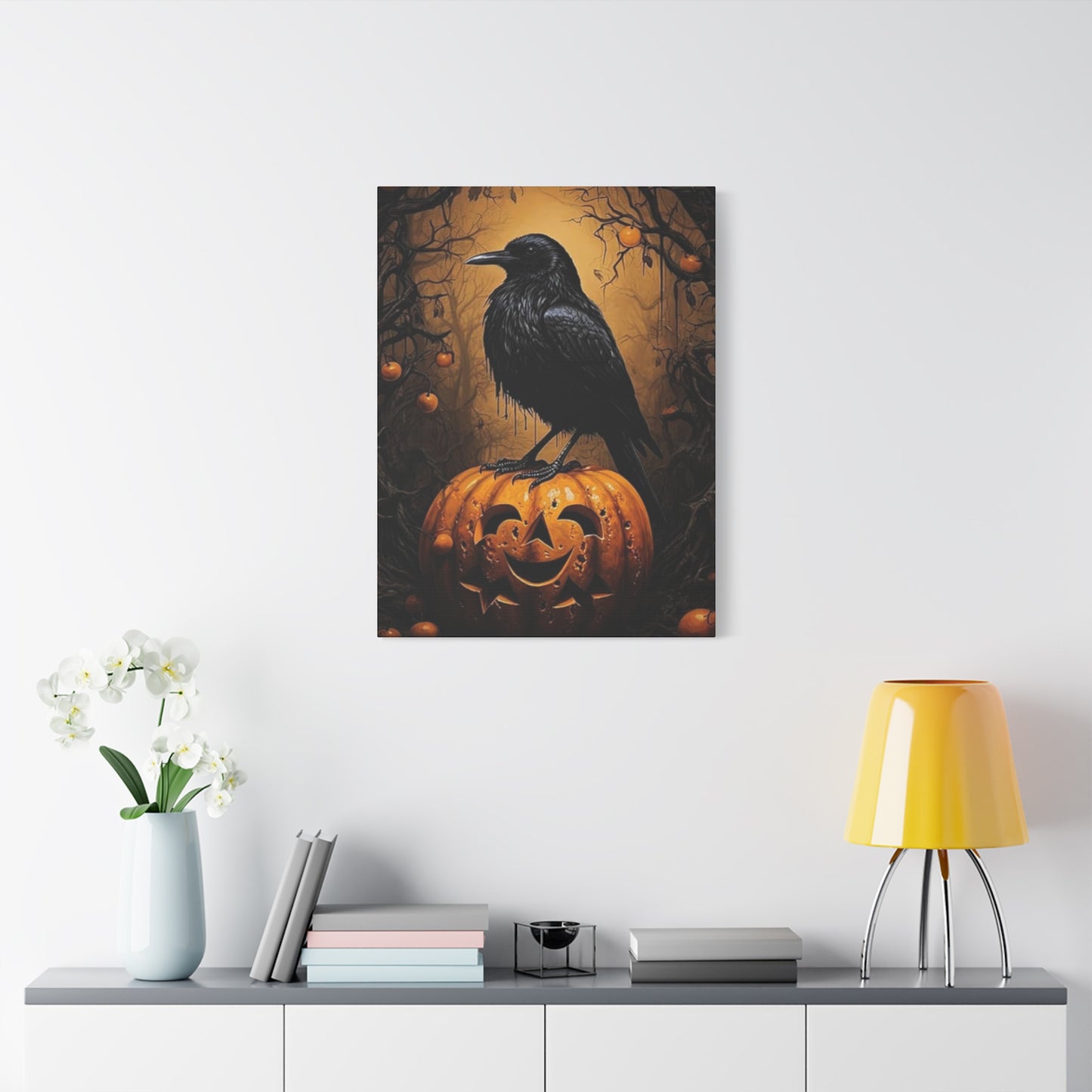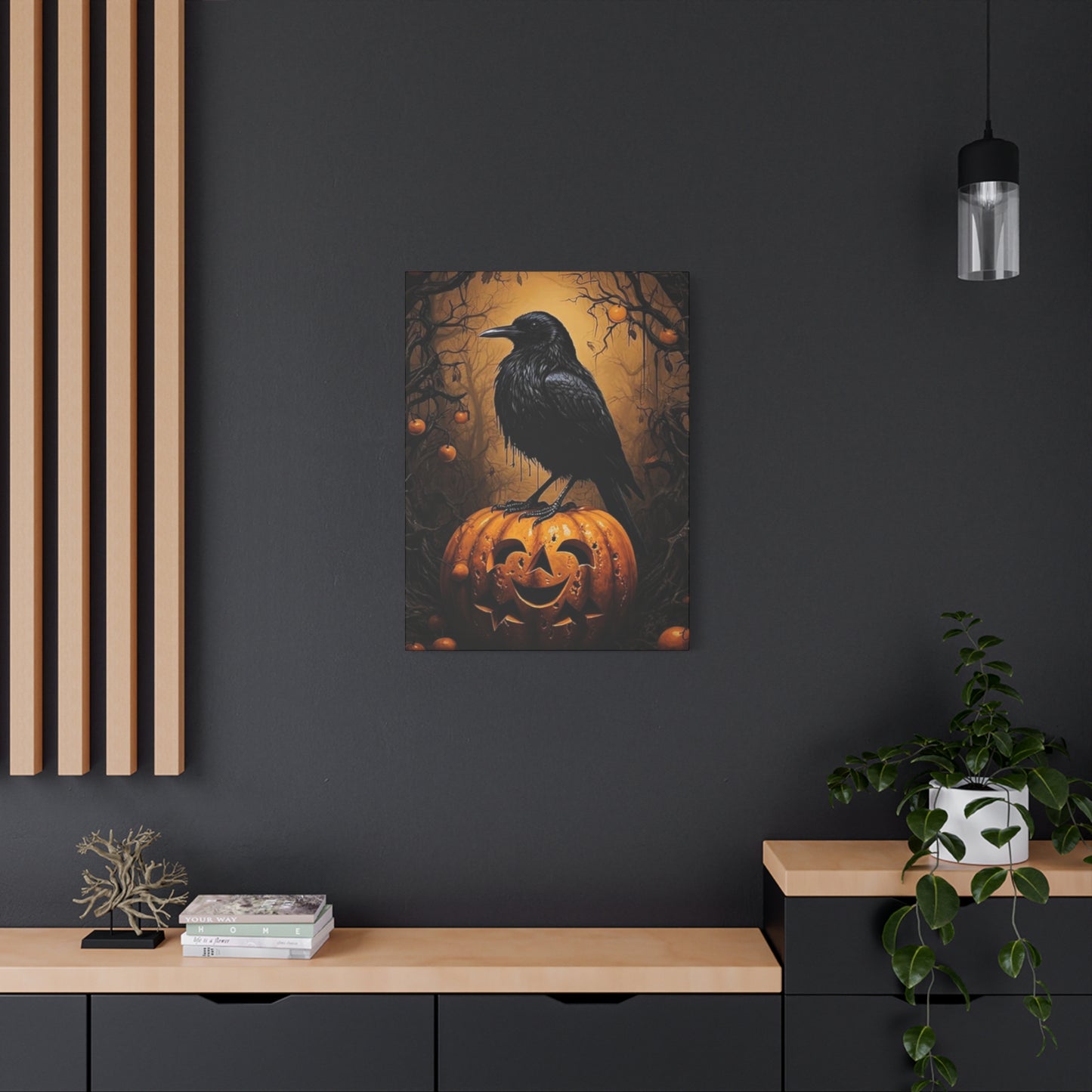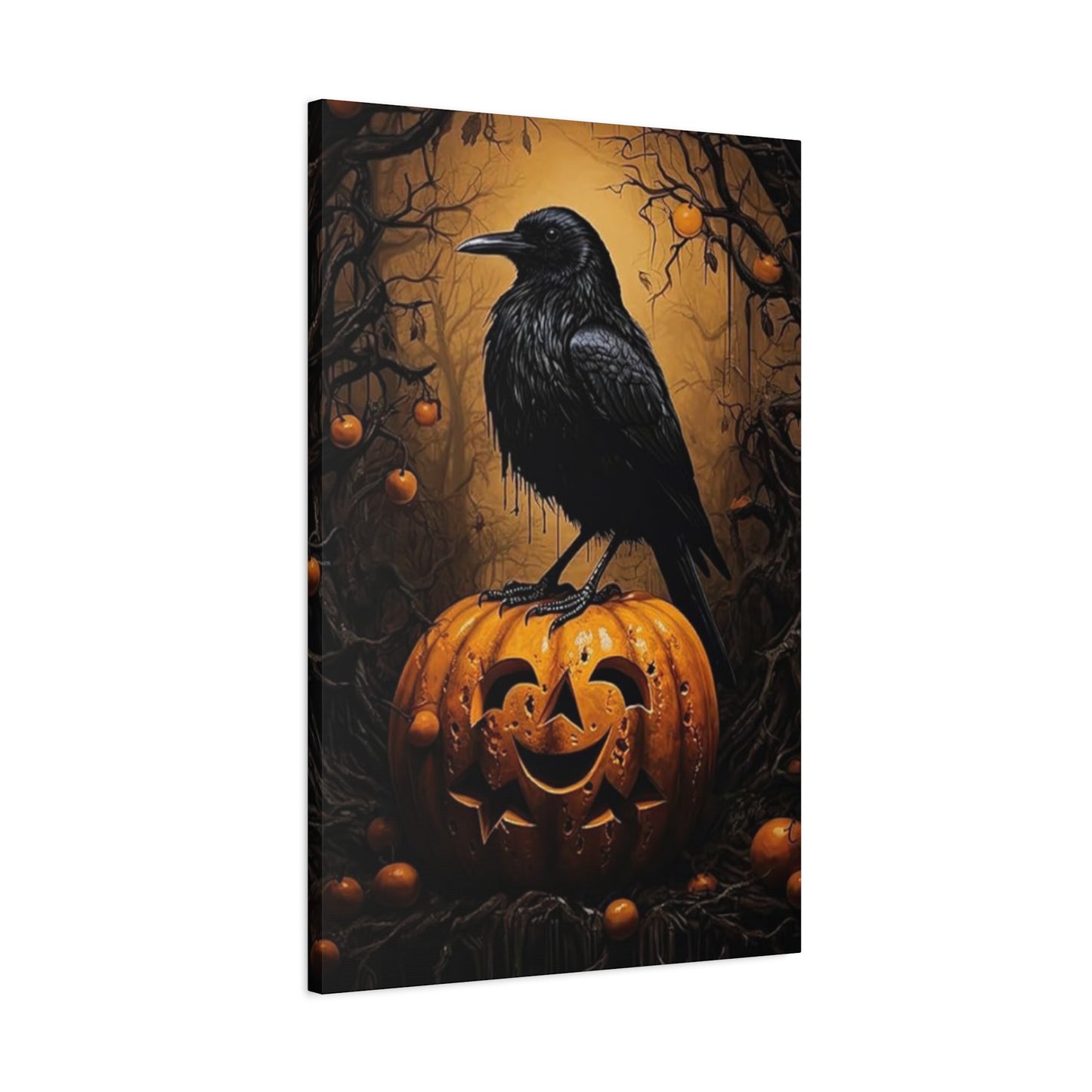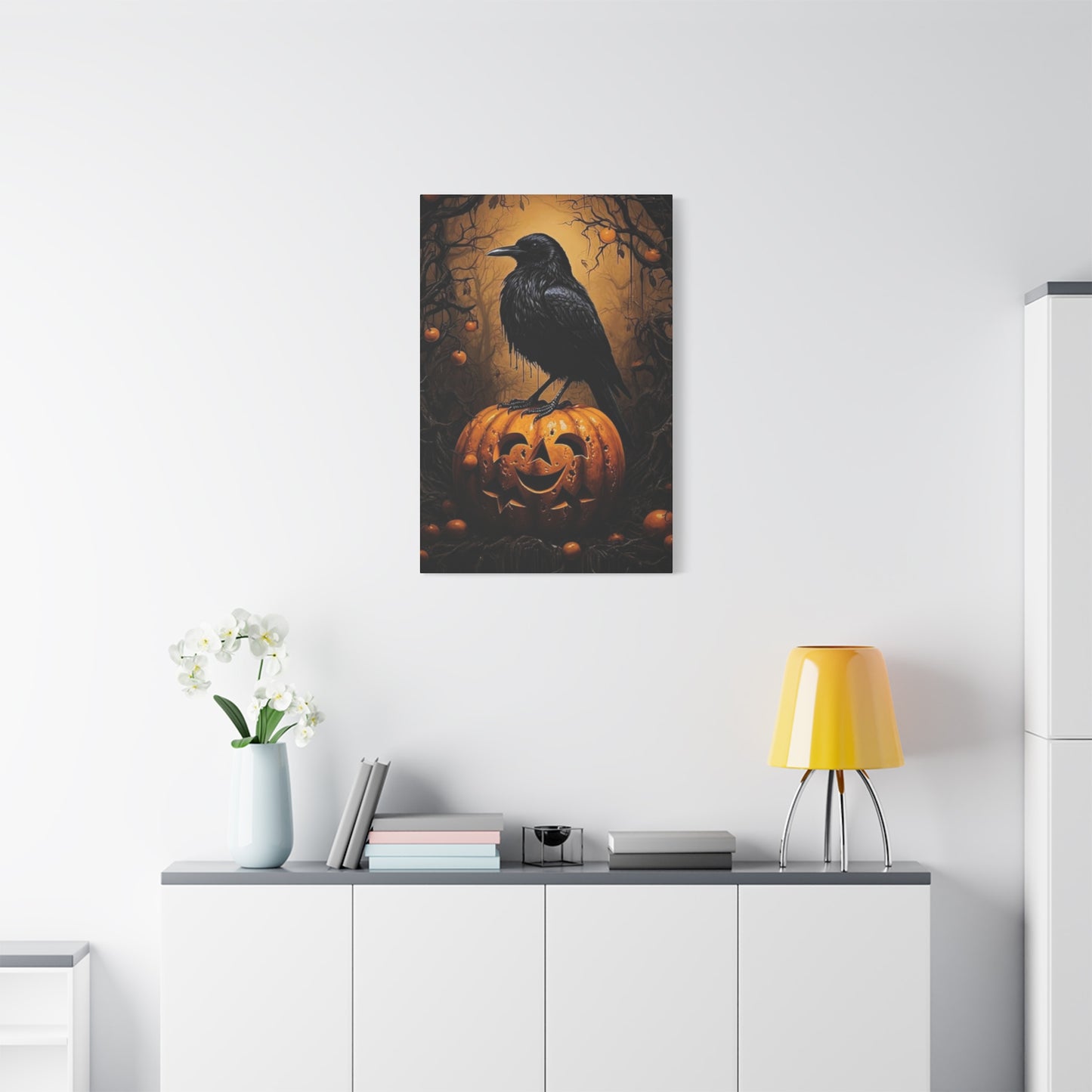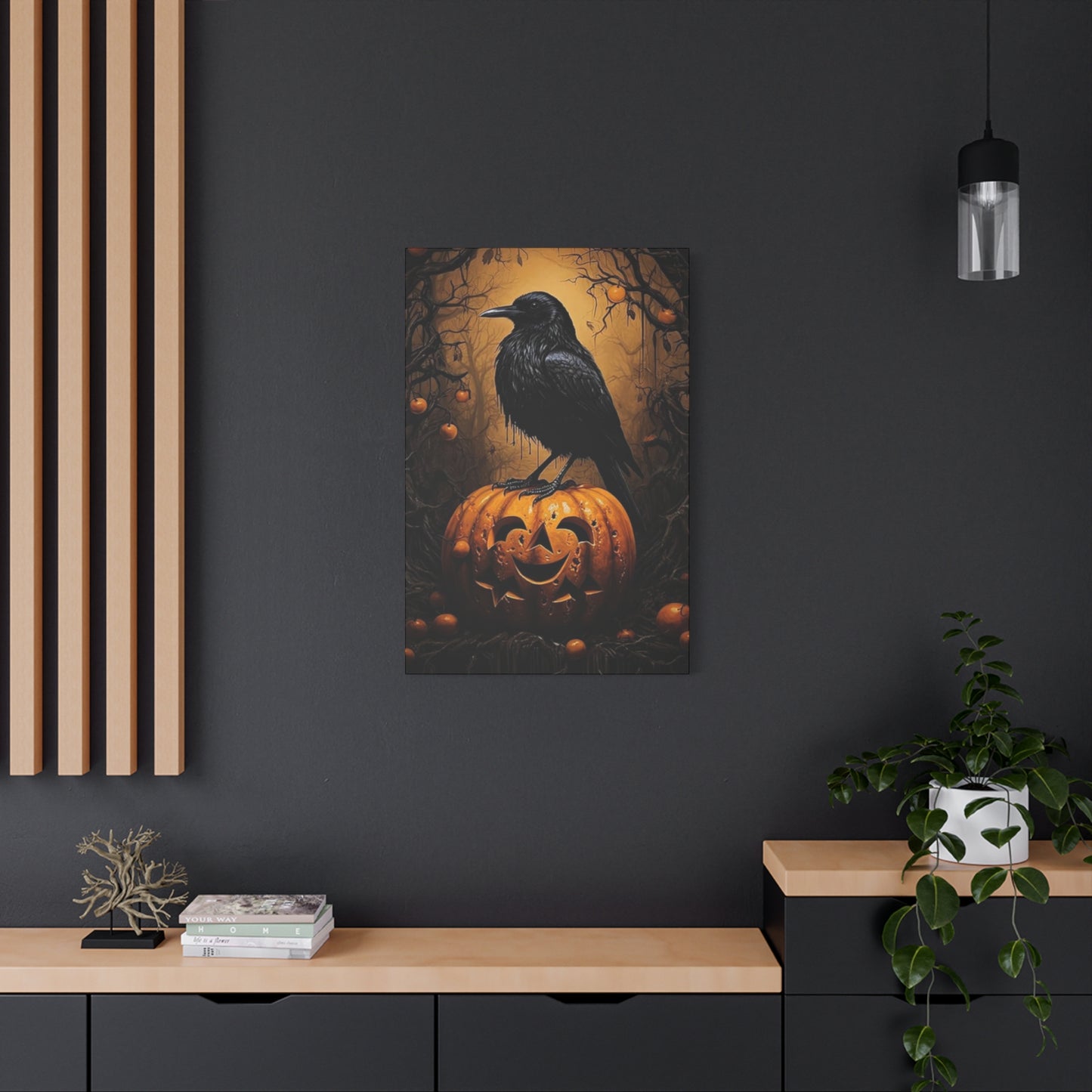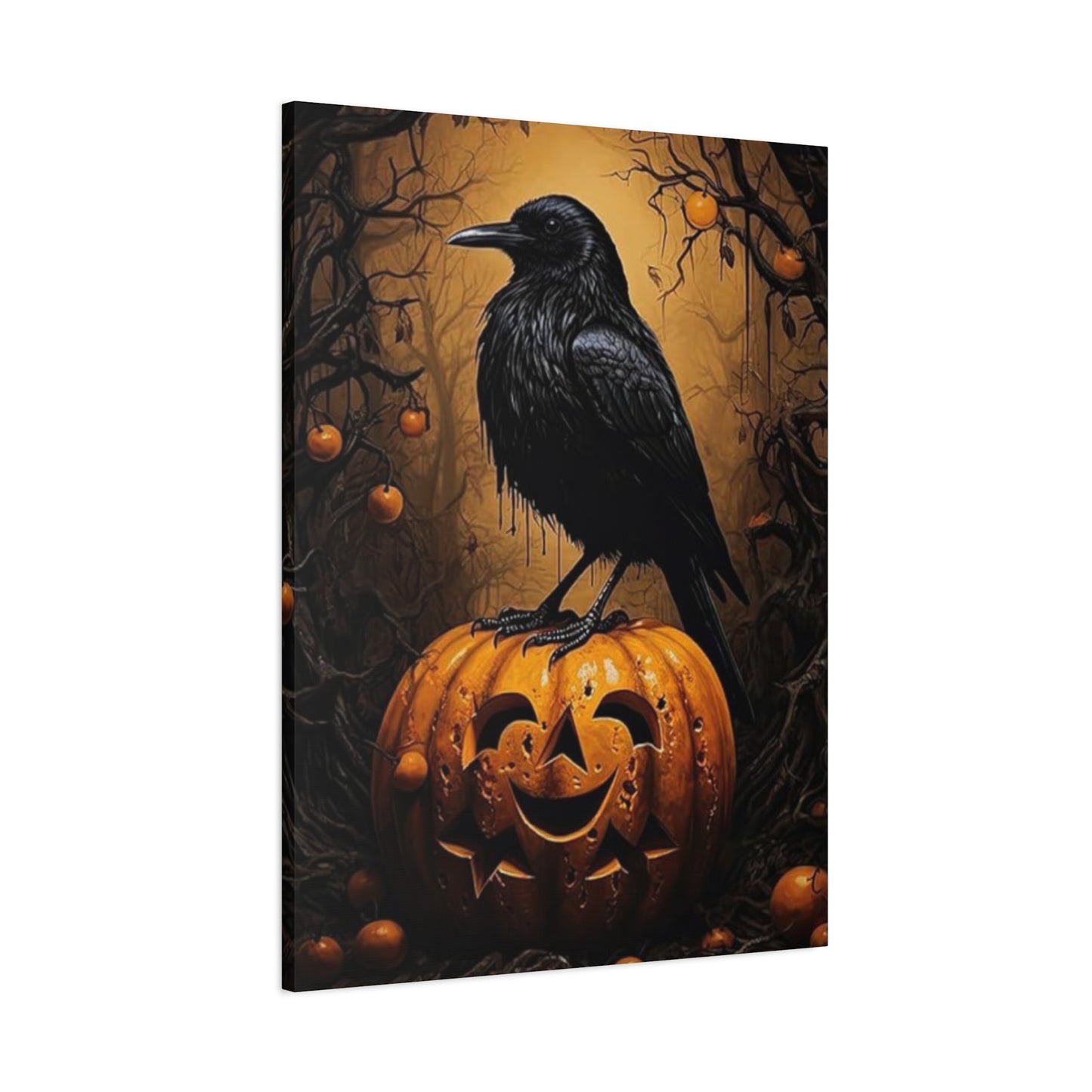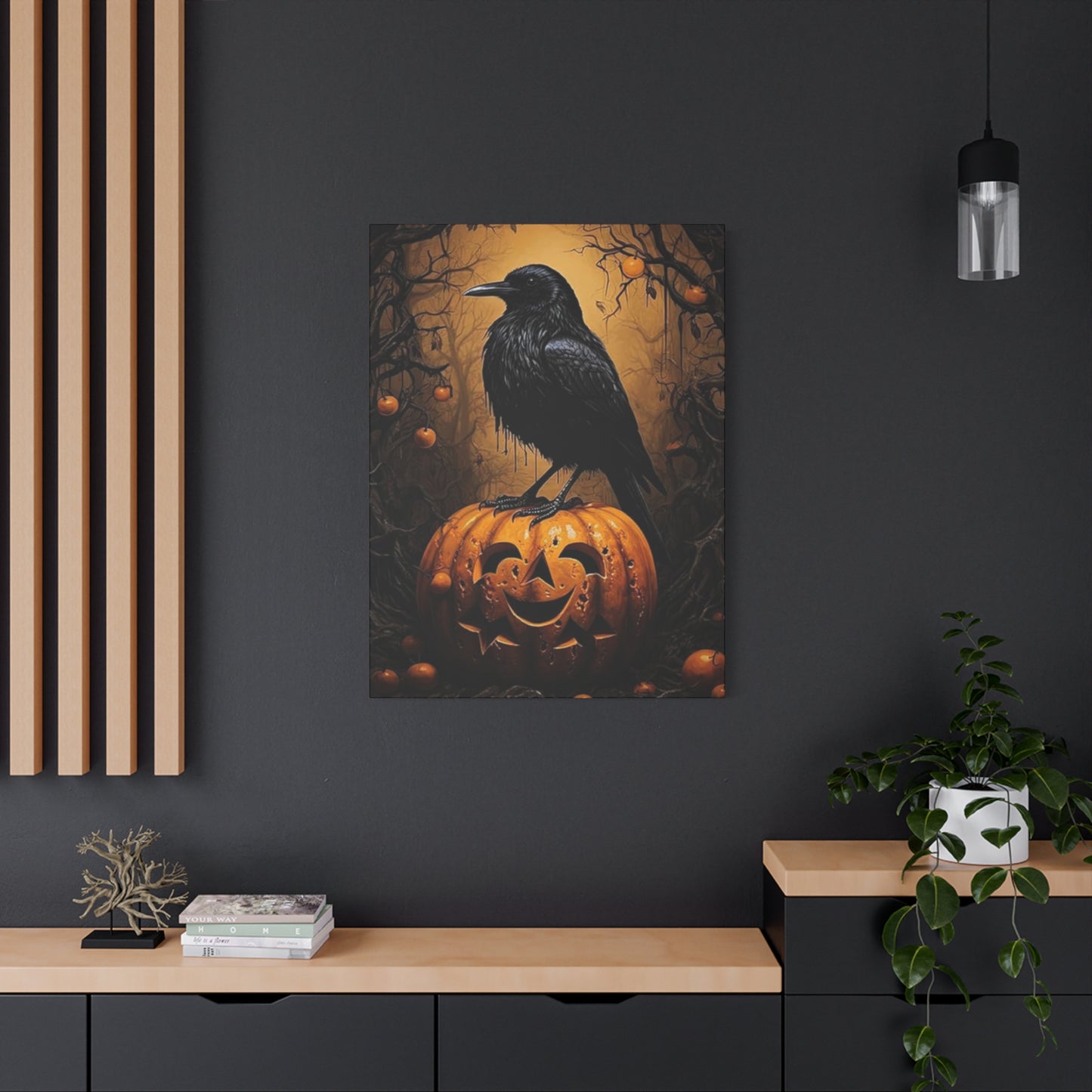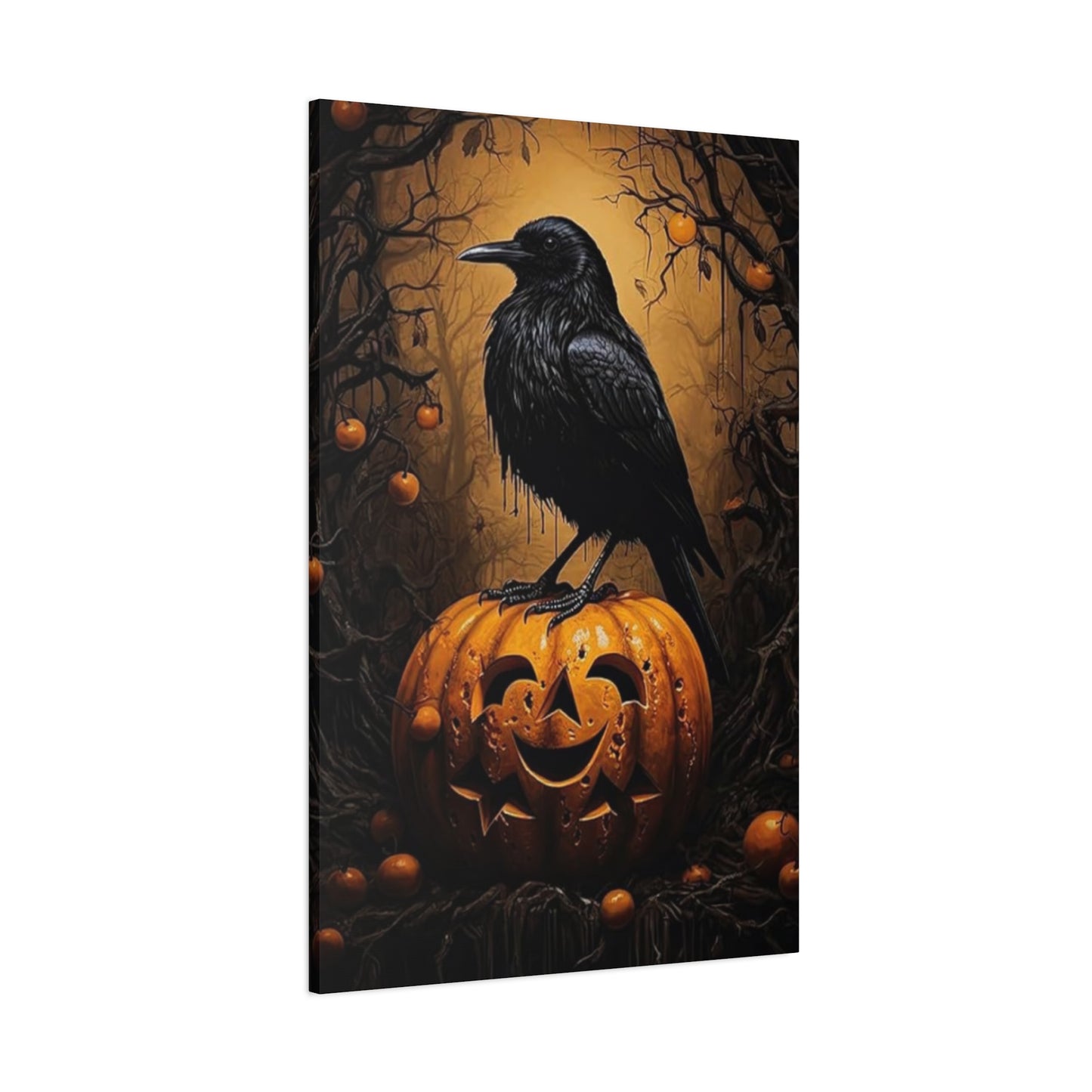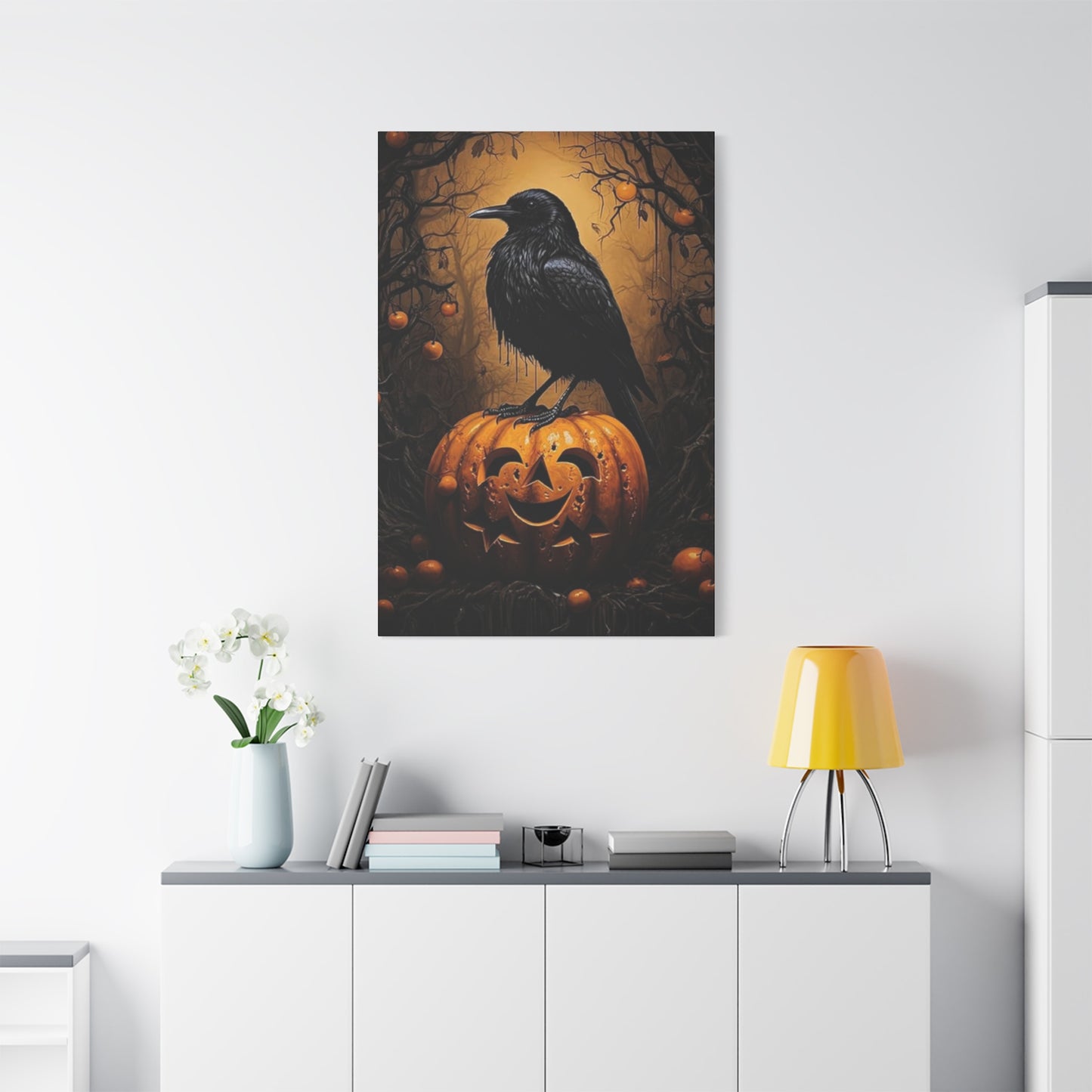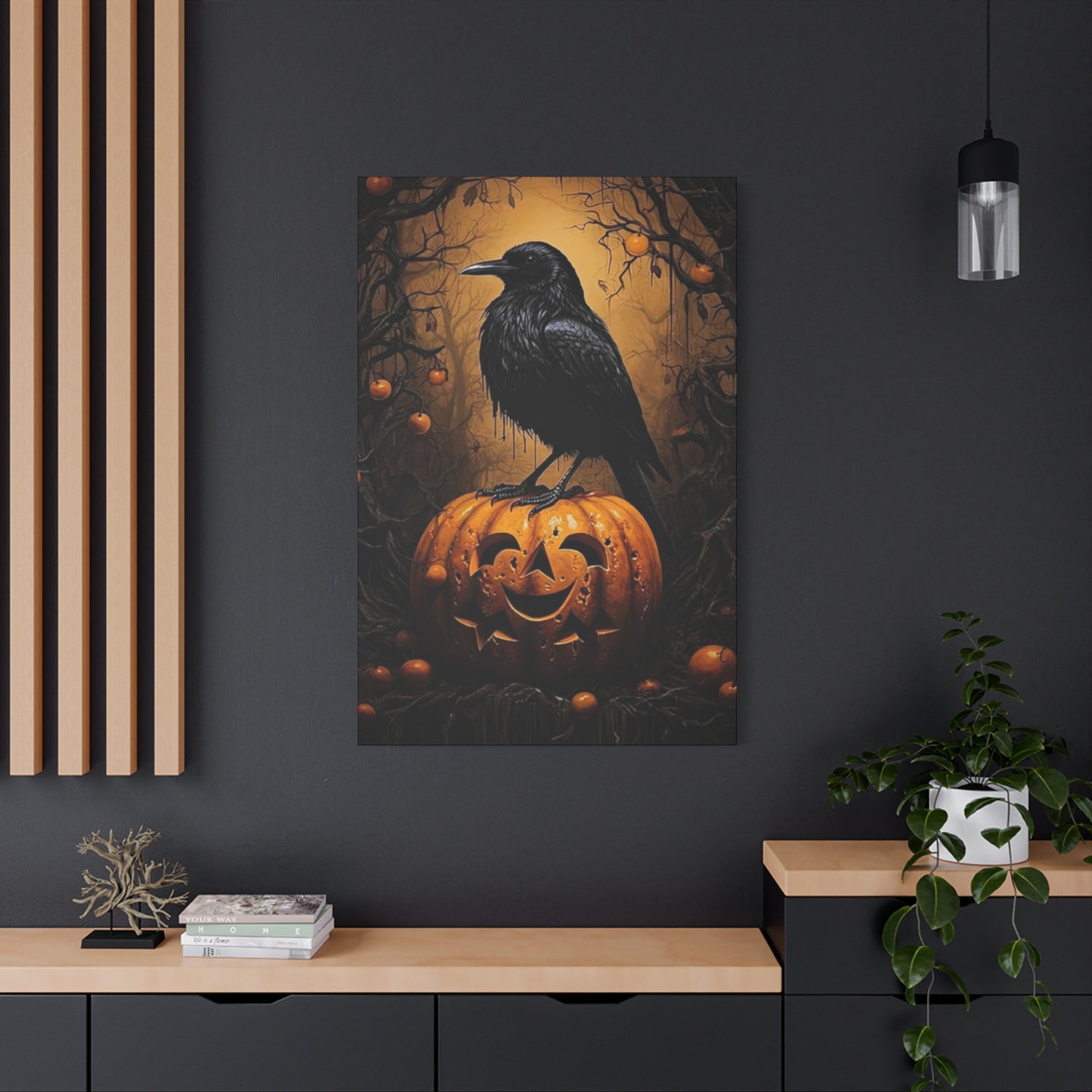Haunting Beauty: Scary Crow Wall Art for Bold Wall Statements
The allure of corvid imagery has captivated artists and decorators for centuries, transforming ordinary living spaces into extraordinary sanctuaries of dark beauty. These magnificent black birds, often misunderstood in folklore and literature, bring a sense of mystique and sophistication to any room they grace. The modern fascination with avian artwork featuring these intelligent creatures stems from their dual symbolism representing both wisdom and mystery, making them perfect subjects for those seeking to infuse their spaces with character and depth.
When selecting decorative pieces for your home, the emotional resonance of the artwork matters immensely. Corvid imagery speaks to those who appreciate the darker aesthetic while maintaining an appreciation for natural beauty. These pieces serve as conversation starters, focal points, and expressions of personal style that transcend conventional decorating norms. The dramatic presence of these birds against various backgrounds creates visual interest that draws the eye and holds attention, making them ideal choices for those who want their walls to tell a story.
The versatility of such artwork allows it to complement various interior design schemes, from traditional Victorian Gothic to modern industrial chic. Whether displayed in living rooms, bedrooms, studies, or even commercial spaces like cafes and boutiques, these pieces adapt to their surroundings while maintaining their powerful visual impact. The timeless appeal of corvid imagery ensures that your investment in such artwork will remain relevant and striking for years to come, never falling victim to fleeting design trends.
Dark Elegance on Canvas
Canvas prints featuring corvids exemplify the perfect marriage between sophistication and edge in contemporary home decoration. The texture of canvas material itself adds depth and authenticity to the imagery, creating shadows and highlights that enhance the dramatic nature of the subject matter. Unlike traditional paper prints, canvas offers a gallery-quality presentation that elevates the perceived value and artistic merit of the piece, making your walls feel more like curated exhibition spaces than simple decorated surfaces.
The production process for quality canvas prints involves careful attention to color accuracy and detail preservation. High-resolution digital printing technology captures every feather detail, every glint in the bird's eye, and every subtle gradation in the background. This technical excellence ensures that the final product delivers the intended emotional impact, whether that's a sense of foreboding, wonder, or contemplative calm. The colors remain vibrant and fade-resistant when proper UV-protective coatings are applied, ensuring longevity that matches the timeless subject matter.
Selecting the right canvas size requires consideration of both the space available and the desired impact. Larger pieces make bold statements and work well as focal points above sofas, beds, or in dining areas. Medium-sized canvases offer flexibility for gallery wall arrangements or smaller rooms where proportion matters. Small canvas prints can be grouped in sets or used to fill awkward spaces that need visual interest. The beauty of canvas artwork lies in its ability to adapt to various display methods, from traditional hanging to leaning casually against walls for a more relaxed, contemporary aesthetic.
The framing options for canvas prints further enhance their elegance. Floating frames create the illusion of the canvas hovering within the frame, adding a modern touch to classic imagery. Gallery wraps, where the image continues around the sides of the canvas, eliminate the need for framing entirely and create a clean, contemporary look. Traditional framing in black, silver, or distressed wood can emphasize different aspects of the artwork, from gothic drama to rustic charm. Each framing choice transforms the piece, allowing customization that aligns with your specific aesthetic preferences.
Mysterious Crow in Artistic Form
The artistic interpretation of corvids ranges from photorealistic representations to abstract impressions, each approach offering unique benefits for interior decoration. Realistic artwork captures the true essence of these birds, showcasing their glossy plumage, intelligent eyes, and commanding presence with scientific accuracy. These pieces appeal to nature enthusiasts and those who appreciate the genuine beauty of wildlife in its authentic form. The detail in realistic corvid art often reveals aspects of the birds that casual observers might miss, from the subtle iridescence of their feathers to the curiosity evident in their gaze.
Abstract and stylized interpretations open doors to more imaginative possibilities, allowing artists to emphasize particular qualities or emotions associated with corvids. Geometric representations might highlight the angular nature of their features, while watercolor styles can soften their appearance and emphasize their grace in flight. Minimalist line drawings capture their essence with economy of form, proving that sometimes less truly is more when conveying the spirit of these remarkable birds. These artistic choices enable collectors to find pieces that resonate with their personal aesthetic sensibilities while still celebrating the subject matter.
Mixed media approaches combine various artistic techniques to create layered, complex pieces that reward closer inspection. Combining photography with painted elements, digital manipulation with traditional illustration, or collage techniques with original drawings results in unique artworks that stand apart from mass-produced alternatives. These hybrid pieces often carry additional depth and meaning, as the layering of techniques mirrors the multilayered symbolism associated with corvids themselves. Collectors of such pieces enjoy knowing they possess something truly distinctive that reflects both artistic innovation and respect for the subject.
The color palette chosen for corvid artwork dramatically affects its mood and compatibility with different interiors. Traditional black and white presentations emphasize contrast and drama, creating striking visual statements that work well in minimalist or monochromatic spaces. Introducing deep blues, purples, or greens into the composition adds richness and depth while maintaining the mysterious atmosphere. Warmer tones like burgundy or burnt orange can soften the overall feel, making the artwork more approachable while retaining its distinctive character. The versatility of corvid imagery allows for these varied interpretations without losing the essential nature of the subject.
Gothic Wall Art for Bold Interiors
Gothic aesthetic has experienced a remarkable resurgence in interior design, moving beyond its subcultural origins to influence mainstream decorating trends. This style embraces darkness not as something to fear but as a source of beauty, depth, and sophistication. Incorporating gothic elements into modern homes requires balance and intentionality, ensuring that spaces feel dramatic and interesting rather than overwhelming or oppressive. Corvid artwork serves as an ideal gateway into gothic styling, offering unmistakable thematic content while remaining accessible enough for those new to this aesthetic approach.
The gothic interior palette typically features deep, rich colors that create cocoon-like environments conducive to relaxation and introspection. Burgundy, forest green, midnight blue, and charcoal gray form the foundation, accented with metallic touches in aged brass, tarnished silver, or antique gold. Within this color scheme, corvid artwork featuring black birds against complementary backgrounds creates perfect harmony, tying together various design elements while adding organic subject matter that prevents the space from feeling too manufactured or staged. The natural imagery provides necessary contrast to the often ornate or industrial elements common in gothic interiors.
Texture plays a crucial role in successful gothic design, and canvas artwork contributes to this textural richness. Combining the canvas with velvet upholstery, distressed leather, aged wood, wrought iron, and stone or stone-like surfaces creates sensory interest that makes spaces feel layered and intentionally curated. The matte finish of quality canvas prints pairs beautifully with both glossy and matte surfaces throughout the room, adapting to various material combinations without clashing. This textural compatibility makes corvid canvas art particularly versatile within gothic spaces that celebrate material diversity.
Lighting design in gothic interiors requires careful consideration to achieve the right atmosphere without creating spaces that feel genuinely dark or oppressive. Layered lighting approaches using ambient, task, and accent sources allow for flexibility throughout the day and evening. Spotlighting corvid artwork adds drama and ensures these pieces remain visible focal points even in dimly lit spaces. Wall sconces, floor lamps with dark shades, and candles in ornate holders contribute to the gothic mood while providing functional illumination. The interplay of light and shadow across canvas artwork creates dynamic visual experiences that change throughout the day, keeping the space interesting and alive.
Scary Crow Captured on Canvas
The perception of corvids as frightening creatures stems from centuries of folklore, literature, and cultural associations that have branded them as omens and harbingers. This reputation, while largely undeserved from a biological standpoint, provides rich material for artists and decorators interested in creating spaces with edge and attitude. Artwork that leans into the scary aspects of corvid imagery typically features dramatic lighting, intense compositions, and environmental elements that enhance the sense of foreboding or supernatural presence. These pieces appeal to those who embrace the darker side of nature and appreciate aesthetics that challenge conventional notions of beauty.
Compositions featuring corvids in threatening poses or unsettling contexts create powerful visual narratives that engage viewers emotionally. A bird with wings spread wide in aggressive display, multiple birds gathering ominously, or a solitary figure perched against a stormy sky all tell stories that viewers interpret through their own experiences and cultural knowledge. This narrative quality transforms decorative artwork into something more meaningful, creating emotional connections that simple pretty pictures cannot achieve. The scary corvid becomes a character in your home's visual story, adding depth and intrigue to the environment.
The technical execution of scary corvid artwork often employs high contrast, sharp details, and careful attention to elements like eyes and talons that emphasize the bird's predatory nature. Photographers capturing these moments in nature wait for the perfect combination of lighting, weather, and bird behavior to create images that genuinely unsettle or provoke strong emotional responses. Artists working from imagination or reference materials exaggerate certain features or add contextual elements that enhance the frightening atmosphere. Both approaches require skill and understanding of what makes an image truly impactful rather than merely cliché or cartoonish.
Displaying scary corvid artwork requires courage and conviction, as these pieces make bold statements about the owner's aesthetic preferences. They work particularly well in spaces where you want to create memorable impressions, such as entryways, dining rooms, or home offices. The key to successful display lies in supporting the artwork with complementary design choices rather than trying to soften or apologize for its intensity. Embracing the scary elements fully while maintaining overall design cohesion creates spaces that feel intentional and sophisticated rather than accidentally macabre or trying too hard to shock.
Dark Forest and Crow Prints
The combination of corvid imagery with forest settings creates deeply atmospheric artwork that evokes primal connections to nature and wilderness. Forests have long represented places of mystery, transformation, and the unknown in human consciousness, making them perfect backdrops for these already symbolic birds. Dark forest compositions might feature towering trees creating cathedral-like spaces, twisted branches forming natural frames, or misty depths suggesting hidden secrets. The corvid within this context becomes both inhabitant and guide, a creature perfectly adapted to navigating these shadowy realms.
Seasonal variations in forest settings provide diverse aesthetic options while maintaining thematic consistency. Autumn forests with their dying leaves and golden light create melancholy beauty that resonates with those who find meaning in cycles of death and rebirth. Winter scenes with bare branches and possibly snow offer stark, minimalist beauty where the corvid stands out dramatically against simplified backgrounds. Spring and summer forests, though less common in dark aesthetic artwork, can still convey mystery through dense foliage and deep shadows that create visual complexity and depth.
The interplay between the corvid subject and the forest environment creates compositional opportunities that pure wildlife or pure landscape art cannot achieve. The bird might be rendered in sharp focus while the forest softens into atmospheric blur, directing attention while maintaining context. Alternatively, the forest might receive equal visual weight, with the corvid becoming an integrated element that viewers discover upon closer inspection. These compositional choices affect how viewers engage with the artwork and what emotional responses the piece evokes, from immediate dramatic impact to gradual unfolding of meaning.
Color temperature in dark forest corvid prints significantly influences their emotional tone and interior design compatibility. Cool-toned pieces featuring blues, greens, and purples create calming yet mysterious atmospheres suitable for bedrooms and meditation spaces. Warm-toned works incorporating browns, ambers, and even subtle reds bring energy and richness appropriate for social spaces. Neutral approaches using various grays and blacks offer maximum versatility and timeless appeal. Understanding these color temperature effects helps in selecting pieces that will enhance rather than clash with existing color schemes in your spaces.
Eerie Crow Silhouettes for Walls
Silhouette art represents one of the oldest and most enduring forms of visual representation, and its application to corvid imagery produces striking results with minimal means. The reduction of the subject to pure shape eliminates distracting details and focuses attention on form, posture, and overall composition. Corvid silhouettes work particularly well because these birds have distinctive, recognizable shapes that remain identifiable even when rendered as simple black forms against lighter backgrounds. This simplicity makes silhouette art versatile for various interior styles, from ultra-modern to traditional.
The backgrounds against which corvid silhouettes appear dramatically affect their impact and meaning. Silhouettes against bright skies create high contrast that feels dramatic and definitive, with clear separation between subject and environment. Gradated backgrounds transitioning from light to dark add depth and atmosphere while maintaining the essential silhouette quality. Textured or patterned backgrounds introduce visual interest that prevents the simplicity of the silhouette from feeling plain or unfinished. Some contemporary pieces even place silhouettes against abstract or completely unexpected backgrounds, creating surreal or conceptual works that challenge expectations.
Multiple corvid silhouettes arranged within a single composition create narrative possibilities and visual rhythm that single subjects cannot achieve. A scattered flock might suggest chaos or freedom depending on arrangement and context. Birds aligned on a wire or branch create order and pattern that appeals to those who appreciate structured composition. Silhouettes showing birds in flight at various stages create dynamic movement that brings energy to static walls. These multi-subject pieces work particularly well as statement artwork in larger spaces where their complexity can be properly appreciated.
The technical production of silhouette artwork ranges from traditional cut paper techniques to modern digital design, each approach offering distinct aesthetic qualities. Hand-cut silhouettes possess organic irregularities and evidence of the maker's hand that add charm and authenticity. Digital silhouettes achieve perfect smoothness and mathematical precision that feels contemporary and clean. Vector-based designs allow for scaling without quality loss, making them ideal for large format printing. Photography-based silhouettes capture real birds in authentic poses that would be difficult to draw or design from imagination, combining artistic composition with documentary authenticity.
Halloween Inspired Wall Décor
The seasonal decoration phenomenon surrounding Halloween has evolved from temporary, disposable items to increasingly sophisticated, year-round appropriate aesthetics. Corvid artwork fits perfectly into this evolution, offering Halloween associations without the cartoonish quality of traditional seasonal decorations. These pieces appeal to those who embrace spooky aesthetics beyond October, integrating gothic and macabre elements into their permanent décor schemes. The sophistication of fine art corvid prints allows them to transition seamlessly from seasonal accent to permanent fixture as tastes evolve or confidence in one's aesthetic choices grows.
Halloween color schemes traditionally feature orange and black, but contemporary interpretations embrace broader palettes including purple, green, deep red, and various neutrals. Corvid artwork naturally accommodates these color variations while maintaining its essential character and Halloween appropriateness. A bird against an orange sunset sky nods to the season while remaining beautiful enough for year-round display. Green-tinted atmospheric effects create otherworldly qualities associated with Halloween magic and supernatural themes. Red accents might suggest danger or drama without resorting to obvious gore or violence that would limit the artwork's appropriateness for various spaces.
Thematic elements commonly associated with Halloween pair naturally with corvid subjects in artwork designed for this market. Full moons, bare trees, graveyards, old houses, and misty landscapes all provide contextual settings that enhance the Halloween connection while maintaining artistic integrity. These elements should feel integrated rather than forced, with the corvid remaining the primary focus rather than becoming merely one component in a cluttered Halloween scene. The best Halloween-inspired corvid art balances recognizable seasonal elements with sophisticated execution that prevents the piece from reading as juvenile or kitschy.
The decision to display Halloween-themed corvid art year-round versus rotating it seasonally depends on personal preference and the specific piece's aesthetic qualities. Artwork with subtle Halloween elements or sophisticated execution can easily function as permanent décor that happens to shine particularly bright during autumn. More obviously seasonal pieces might rotate with other artwork throughout the year, keeping your space fresh and reflecting seasonal changes. Some collectors develop entire seasonal rotation systems, with Halloween corvid art being one category among many that cycle through their spaces, creating an ever-evolving home environment that never becomes stale or static.
Crow and Shadows Canvas Prints
The relationship between corvids and shadows provides rich symbolic and compositional territory for artists and photographers. Shadows represent mystery, the unknown, duality, and hidden aspects of reality, themes already associated with corvids through cultural tradition. Artwork that explicitly features or emphasizes shadows alongside the bird subject creates layered meaning and visual interest beyond what either element could achieve alone. The shadow might replicate the bird's form, creating doubling effects, or it might twist into unexpected shapes that suggest transformation or hidden natures.
Lighting techniques that create dramatic shadows require specific conditions and careful planning, whether captured through photography or rendered through illustration. Strong directional lighting from low angles creates long, dramatic shadows that add gothic atmosphere to any corvid image. Backlighting creates rim light around the bird's silhouette while casting most of its body into shadow, producing mysterious and dramatic effects. Multiple light sources create complex shadow patterns that add visual sophistication and technical interest to compositions. Understanding these lighting principles helps in selecting artwork that achieves specific atmospheric goals.
The symbolic interpretation of shadow imagery in corvid art invites philosophical contemplation about light and dark, knowledge and ignorance, the seen and unseen. The bird might represent consciousness or awareness while its shadow symbolizes the subconscious or hidden aspects of self. Alternatively, the physical bird could represent the mundane world while its shadow hints at spiritual or supernatural dimensions. These interpretational possibilities make shadow-focused corvid art particularly appealing to those who appreciate layered meaning in their decorative choices, seeking artwork that rewards contemplation and offers more than surface beauty.
Compositional techniques that emphasize shadows might place them in the foreground with the bird behind, reversing expected visual hierarchies. Shadows might extend beyond the picture frame through cropping choices, suggesting worlds beyond what's visible and engaging viewers' imaginations. Patterns created by multiple shadows from multiple birds create abstract elements within realistic compositions. Color choices for shadows, whether naturalistic grays and blacks or stylized blues or purples, affect mood and stylistic coherence. These artistic decisions distinguish exceptional shadow-focused corvid art from pedestrian examples.
Spooky Wall Art for Dramatic Spaces
Dramatic interior spaces demand artwork with presence and personality strong enough to hold its own against bold architectural features, striking color schemes, or maximalist décor approaches. Spooky corvid art rises to this challenge by offering subject matter and execution that refuse to fade into the background. These pieces work particularly well in spaces with high ceilings, dark walls, or theatrical lighting where conventional pretty pictures would feel lost or inadequate. The inherent drama of corvid imagery matches and enhances the drama of the space itself, creating cohesive environments where every element contributes to an overall atmosphere.
Scale considerations become particularly important in dramatic spaces where artwork must maintain impact across large areas or from considerable distances. Oversized single prints make powerful statements that anchor entire room designs. Multi-panel installations spanning substantial wall sections create immersive experiences that surround and engage viewers. Even smaller pieces can work in dramatic spaces when grouped effectively or positioned in intimate viewing areas where their details can be properly appreciated. The key lies in matching artwork scale to viewing distance and surrounding architectural scale.
The integration of spooky corvid art with other dramatic design elements requires attention to thematic cohesion without falling into predictable cliché. Pairing corvid prints with other dark nature imagery creates connections between pieces while maintaining variety. Mixing corvid subjects with abstract art in compatible colors and moods prevents spaces from becoming thematic museums devoted to single subjects. Incorporating diverse artistic styles united by emotional tone or color palette demonstrates sophisticated collecting rather than simple theme-following. The goal is creating spaces that feel curated by someone with broad aesthetic interests rather than someone fixated on a single narrow concept.
Lighting design in dramatic spaces must serve both functional and atmospheric purposes while properly showcasing artwork. Track lighting systems offer flexibility to adjust as art collections evolve or pieces rotate. Picture lights mounted directly above or below artwork create focused illumination that emphasizes specific pieces. Colored lighting effects can transform corvid art's appearance and mood, though this approach requires restraint to avoid garish results. Natural light through carefully controlled windows or skylights creates changing conditions throughout the day that keep artwork visually dynamic and prevent viewer fatigue that can occur with static lighting conditions.
Gothic Nature Scenes in Art
The gothic appreciation of nature differs fundamentally from romanticized pastoral traditions, instead finding beauty in nature's darker, more dangerous, and more mysterious aspects. Gothic nature art celebrates storms over sunshine, winter over summer, predators over prey, and wild untamed landscapes over cultivated gardens. Corvid imagery fits perfectly within this gothic nature tradition, as these birds embody the qualities that gothic sensibilities prize: intelligence, adaptability, survival in harsh conditions, and associations with death and the supernatural. Artwork combining corvids with gothic natural settings creates powerful synergies where bird and environment mutually reinforce thematic content.
Landscape elements that commonly appear in gothic nature scenes include craggy mountains, turbulent seas, ancient forests, barren moors, and desolate plains. These settings suggest inhospitable environments where nature's power dwarfs human concerns and conventional beauty standards don't apply. When corvids inhabit these landscapes in artwork, they appear as perfectly adapted natives, creatures that thrive where others merely survive. This positioning elevates the birds from simple wildlife subjects to symbols of resilience and mastery over difficult circumstances, adding narrative depth to decorative pieces.
Weather conditions and atmospheric effects play crucial roles in establishing gothic mood within nature scenes. Storm clouds, fog, mist, rain, snow, and dramatic lighting from hidden or setting suns all contribute to gothic atmosphere without requiring overtly supernatural elements. These natural phenomena create mystery and drama through purely realistic means, making the artwork accessible to those who appreciate gothic aesthetics but prefer representational rather than fantastical imagery. The corvid within these atmospheric conditions might be rendered sharply to contrast with soft backgrounds, or incorporated into the overall haziness to suggest partial obscurity and mystery.
The color palettes of gothic nature scenes typically favor desaturated or cool-toned approaches that diverge from the vibrant colors often associated with nature photography and landscape painting. These color choices emphasize mood over documentary accuracy, prioritizing emotional truth over literal representation. Monochromatic or near-monochromatic approaches in blues, grays, or greens create unity and intensity. Limited color accents might highlight specific elements like the corvid's eye or a shaft of light breaking through clouds. These deliberate color choices distinguish gothic nature art from conventional wildlife or landscape imagery, clearly signaling aesthetic intentions and ideal audience.
Mysterious Bird Artwork for Home Décor
Mystery in art involves withholding complete information, leaving gaps for viewers' imaginations to fill, and suggesting rather than stating explicitly. Corvid artwork achieves mystery through various means including obscured or partially visible subjects, ambiguous contexts, unusual perspectives, or surreal elements that disrupt expectations. Mysterious bird art engages viewers more actively than straightforward representational work, requiring them to interpret and imagine rather than simply observe. This engagement creates stronger emotional connections and makes artwork more memorable and personally meaningful to its owners.
Compositional techniques that enhance mystery include strategic cropping that shows only part of the bird or its environment, creating questions about what exists beyond the frame. Shallow depth of field that keeps only select areas in focus while others blur into abstraction forces viewers to construct complete mental images from partial information. Unusual angles or perspectives that present familiar subjects in unfamiliar ways disrupt automatic recognition and require conscious processing. Juxtapositions of corvids with unexpected elements or settings create cognitive dissonance that demands resolution through interpretation.
Symbolic elements incorporated into mysterious corvid artwork might include keys, clocks, mirrors, books, or other objects carrying metaphorical weight in artistic tradition. These elements transform straightforward bird imagery into narrative or conceptual work that invites interpretation and discussion. The relationship between bird and symbol might be unclear, opening multiple interpretational possibilities rather than pointing toward single obvious meanings. This ambiguity makes the artwork richer and more personally relevant as different viewers construct different meanings based on their own experiences and perspectives.
The market for mysterious bird artwork spans from accessible prints to fine art originals, accommodating various budgets and collecting ambitions. Entry-level collectors might begin with high-quality prints from talented emerging artists whose work shows promise and originality. Mid-range collectors might invest in limited edition prints or smaller original works from established artists. Serious collectors pursue original paintings, mixed media works, or large-scale photographs from recognized artists whose work commands premium prices and holds value over time. Regardless of investment level, the key lies in selecting pieces that genuinely resonate personally rather than following trends or buying for purely speculative reasons.
Scary Crow in Dark Atmosphere
Atmospheric rendering separates competent corvid art from exceptional pieces that create immersive experiences for viewers. Dark atmosphere involves more than simply underexposing images or using dark colors; it requires careful construction of mood through integrated choices about lighting, color temperature, environmental elements, and compositional structure. Successful dark atmospheric artwork transports viewers mentally into the depicted space, making them feel the cold, dampness, or foreboding that the image suggests. This transportive quality transforms decorative art into experiential art that affects emotional states and spatial perceptions.
Technical approaches to creating dark atmosphere vary between photography and illustration but share common principles. Photographers manipulating natural or artificial light sources create pools of illumination surrounded by shadow, directing attention while maintaining overall darkness. They might shoot during golden hour, blue hour, or night when ambient light levels naturally create atmospheric conditions. Illustrators and digital artists build atmosphere through layering techniques, adding fog, haze, particle effects, or textural overlays that suggest environmental conditions. Both approaches require restraint, as excessive atmospheric effects can become muddy or unclear rather than mysteriously dark.
The psychological effects of dark atmospheric art make it particularly suitable for specific spaces and purposes. Bedrooms benefit from artwork that promotes relaxation and separation from daytime concerns, and dark atmospheric pieces can support this transition into rest mode. Home theaters or media rooms become more immersive when decorated with artwork that matches the dramatic content typically consumed in these spaces. Creative workspaces like studios or offices for writers, artists, or designers might inspire contemplative moods conducive to imaginative work. Understanding these psychological effects helps in strategic artwork placement throughout homes.
Balancing dark atmospheric artwork with overall room brightness prevents spaces from becoming oppressive or depressing rather than atmospherically interesting. Adequate lighting from diverse sources maintains functionality while allowing dark art to provide visual contrast and focal points. Light-colored or reflective surfaces near dark artwork create dynamic interplay between illumination and shadow. Textiles in medium tones prevent spaces from reading as entirely dark while supporting the artwork's aesthetic. Plants and organic elements introduce life and growth that balance darkness with vitality. These balancing strategies allow successful incorporation of dark atmospheric corvid art without sacrificing livability or comfort.
Hauntingly Beautiful Canvas Prints
The concept of haunting beauty embraces paradox, finding allure in subjects typically considered dark, frightening, or unsettling. Corvid artwork that achieves haunting beauty presents these birds in ways that simultaneously attract and unsettle, creating complex emotional responses that linger in memory long after viewing. This aesthetic sweet spot between beautiful and disturbing appeals to sophisticated viewers who reject simplistic categorizations and appreciate nuance in their aesthetic experiences. Hauntingly beautiful corvid prints become treasured possessions precisely because they resist easy description and continue revealing new aspects over time.
Technical excellence in execution separates truly hauntingly beautiful artwork from pieces that simply present creepy subjects. Masterful use of light and shadow creates dimension and drama that draws viewers into the image. Exquisite detail rendering allows discovery of new elements upon repeated viewings, rewarding sustained attention. Color harmonies that might seem unlikely on paper prove surprisingly effective in execution, demonstrating artistic sophistication. Compositional balance between tension and resolution keeps viewers engaged without overwhelming them. These technical achievements require significant skill and experience, justifying investment in work from accomplished artists.
The emotional journey that hauntingly beautiful artwork takes viewers on typically involves initial attraction to visual elements, followed by recognition of darker or unsettling aspects, and finally synthesis into appreciation of the complex whole. This progression mirrors the psychological process of recognizing and integrating shadow aspects of self and reality, giving the artwork psychological resonance beyond pure aesthetics. The corvid as subject facilitates this journey through its dual associations with both wisdom and death, beauty and fear, the natural and supernatural.
Displaying hauntingly beautiful corvid prints requires confidence and willingness to embrace unconventional beauty standards in home decoration. These pieces work best when featured prominently rather than hidden in secondary spaces, as their impact justifies focal point positioning. Surrounding them with complementary elements that honor rather than soften their nature creates cohesive design statements. Adequate lighting ensures the technical excellence and subtle details remain visible rather than lost in shadow. Regular contemplation and conscious appreciation of these pieces deepens their meaning and value over time, transforming them from mere decoration into significant elements of your lived environment.
Crow Perched in Mist Wall Art
Mist and fog create natural atmospheric effects that photographers and artists have celebrated for centuries as tools for creating mystery, depth, and emotional resonance. When corvids appear in misty settings, the combination of distinctive subject and softening atmosphere produces images of exceptional visual poetry. The mist obscures and reveals simultaneously, suggesting depth and distance while simplifying visual information into essential forms. The corvid perched amid this haziness becomes an anchor point for the eye and imagination, grounding the composition while the surroundings dissolve into suggestion and possibility.
The technical challenges of capturing or creating convincing mist effects require understanding of atmospheric perspective, light scattering, and tonal gradation. In photography, actual misty conditions provide authenticity but occur unpredictably and require patience and planning to capture. Digital manipulation can add or enhance mist effects with varying degrees of success depending on skill and subtlety. Painters and illustrators rendering mist rely on techniques like wet-on-wet application, careful gradation, and strategic preservation of highlights where light penetrates the atmosphere. Regardless of medium, convincing mist requires more than simple blurring or graying; it demands understanding of how atmospheric moisture actually affects light and visibility.
Compositional considerations for misty corvid artwork involve decisions about what to reveal clearly and what to allow the mist to obscure. The bird itself might be rendered sharply while everything beyond a certain distance fades into white or gray nothingness, creating dramatic isolation. Alternatively, even the bird might be partially obscured, with only certain features like the eye or beak remaining sharp, creating mystery about the subject itself. Foreground elements like branches can remain clear to establish spatial relationships while middle and background dissolve into atmosphere. These choices profoundly affect the mood and meaning of the final work.
The color palette of misty corvid artwork typically favors cool tones and desaturated colors that enhance the atmospheric effect. Blue and gray dominate, with potential warm accents from morning or evening light creating color contrast and depth. Monochromatic approaches in various grays create unity and emphasize form and tone over color relationships. Subtle color variations within the apparent gray mist add richness and prevent visual flatness that can occur in truly monochromatic work. These color choices support the misty atmosphere while providing enough visual interest to sustain attention and appreciation.
Eerie Wildlife Art for Walls
Wildlife art traditionally emphasizes the beauty, nobility, or cute appeal of animal subjects, but eerie wildlife art takes a different approach by highlighting aspects that unsettle, provoke, or disturb. This subgenre appeals to those who appreciate nature in its full complexity, including predation, death, survival struggles, and the alien intelligence of creatures whose consciousness differs fundamentally from human experience. Corvid subjects suit this eerie wildlife approach perfectly due to their intelligence, opportunistic feeding habits, and cultural associations that already position them outside conventional animal cuteness.
The techniques that transform ordinary wildlife imagery into eerie presentations include unusual perspectives that defamiliarize common subjects, extreme close-ups that reveal details normally invisible to human observers, and careful selection of behavioral moments that capture aggressive, predatory, or otherwise unsettling actions. Lighting choices emphasizing drama over documentation, color grading that shifts away from naturalistic reproduction toward expressive palettes, and environmental context that suggests danger or discomfort all contribute to the eerie quality. These artistic choices acknowledge that nature encompasses more than the pretty scenes typically celebrated in mainstream wildlife art.
The market for eerie wildlife art remains smaller than for traditional wildlife imagery but shows growing sophistication as audiences tire of predictable pretty animal pictures. Collectors of this work tend to be thoughtful individuals who appreciate complexity and resist sentimentality in their relationship with nature. They might include scientists who understand the realities of predation and survival, outdoors enthusiasts with direct experience of nature's dangers, or simply aesthetically adventurous individuals seeking artwork that challenges rather than comforts. This audience values authenticity and originality over mass appeal.
Displaying eerie wildlife art requires similar considerations to other dark aesthetic artwork, with attention to supportive design elements and appropriate lighting. However, the natural subject matter makes this work more versatile than overtly supernatural or gothic imagery, allowing it to fit into various design contexts from rustic cabins to modern urban apartments. The key lies in treating the artwork as legitimate art rather than quirky novelty, displaying it with the same respect and prominence given to conventional wildlife photography or painting. This approach allows the work to communicate its intended messages about nature's complexity while functioning as sophisticated home décor.
Dark Feathered Beauty on Canvas
The feathers of corvids deserve special attention as structures of remarkable complexity and beauty that contribute significantly to these birds' visual appeal. Each feather combines functional engineering for flight or insulation with aesthetic qualities including subtle iridescence, precise geometric structure, and elegant curves. Artwork that specifically emphasizes feather beauty brings viewers' attention to details they might overlook in life, creating appreciation for natural design and the hidden beauty in common creatures. Close-up or macro photography revealing feather structure provides almost abstract imagery that works in contemporary design contexts while maintaining natural origins.
The iridescence characteristic of corvid plumage creates technical challenges and opportunities for artists and photographers. This phenomenon where structural coloration produces shifting hues depending on viewing angle and light source results in feathers that appear purely black from some perspectives but reveal blues, purples, and greens from others. Capturing this quality requires specific lighting conditions and angles in photography or careful observation and rendering in painting and illustration. Successfully depicting iridescence transforms corvid imagery from simple black bird portraits into complex studies of light interaction with natural structures.
Compositional approaches focusing on feathered beauty might isolate individual feathers as abstract subjects, showcase the patterns created by overlapping feathers on wings or bodies, or contrast the sleek smoothness of well-groomed plumage with ruffled or damaged feathers telling stories of survival and struggle. These compositional choices emphasize different aspects of beauty from pristine perfection to battle-worn character. Collectors drawn to feather-focused artwork often appreciate both natural history and design, seeing these pieces as bridges between scientific illustration and fine art.
The display of feather-focused corvid artwork works particularly well in spaces where close viewing is possible and likely. Above desks, in reading nooks, along hallways, or in intimate dining areas, these pieces reward the closer inspection needed to appreciate their details. Adequate lighting becomes especially important for feather detail artwork, with directional lighting that creates highlights and shadows revealing the three-dimensional structure of the plumage. Pairing feather-focused pieces with actual natural objects like displayed feathers, botanical specimens, or minerals creates naturalist-inspired vignettes that celebrate observation and appreciation of natural forms.
Scary Crow Artwork for Gothic Interiors
Gothic interior design has evolved significantly from its Victorian origins, incorporating modern sensibilities while maintaining its essential character of drama, romance with darkness, and appreciation for elaborate detail. Contemporary gothic spaces might embrace minimalism with dark colors and dramatic lighting, or maintain maximalist approaches with layered textiles, ornate furniture, and abundant decorative objects. Corvid artwork serves both approaches equally well, providing thematic reinforcement and visual interest appropriate to gothic sensibilities. Selecting specific corvid pieces for gothic spaces involves considering how the artwork will dialogue with architectural features, furniture, and other decorative elements.
Conclusion
The striking appeal of scary crow wall art lies in its ability to merge the eerie and the elegant, the mysterious and the mesmerizing, creating wall décor that challenges convention and captivates the imagination. While the crow has long been associated with omens, intelligence, and transformation, its presence in contemporary art transcends the traditional boundaries of fear and superstition. Instead, it becomes a symbol of mystery, depth, and introspection — a reflection of the darker, yet profoundly beautiful aspects of nature and human emotion. Scary crow artwork turns walls into stages for storytelling, inviting viewers to explore the delicate balance between beauty and unease, darkness and light.
At its essence, crow-themed art captures the enigmatic power of this intelligent and adaptable bird. Artists often depict crows in dynamic poses — perched against moonlit skies, surrounded by fog, or emerging from abstract shadowy backgrounds. These visual compositions embody both motion and stillness, giving the artwork an ethereal, cinematic quality. When displayed in interior spaces, such imagery evokes curiosity, depth, and atmosphere. The “scary” aesthetic, rather than being overtly frightening, introduces an element of intrigue that appeals to admirers of gothic elegance, surrealism, and psychological symbolism. It serves as a powerful reminder that beauty often resides in places where the mysterious and the macabre intertwine.
From an interior design perspective, scary crow wall art offers a unique opportunity to make bold visual statements. Large-scale prints can transform minimalist rooms into dramatic, contemplative spaces, while smaller pieces add character and intensity to reading nooks, hallways, or creative studios. The monochromatic or muted color palettes commonly used — blacks, grays, silvers, and deep blues — harmonize perfectly with modern and industrial interiors, providing contrast against neutral walls or complementing metallic accents. Alternatively, artworks incorporating red, gold, or deep plum tones can add vibrancy and warmth to gothic or eclectic settings. Regardless of style, crow art enhances ambiance through emotion and storytelling, allowing homeowners to express individuality and creative daring.
Beyond its visual impact, crow imagery holds profound symbolic meaning that enriches its artistic and emotional value. Across cultures, crows represent intelligence, adaptability, transformation, and spiritual insight. In mythology and literature, they often serve as messengers between worlds — carriers of mystery, knowledge, and transition. When depicted in wall art, the crow becomes a metaphor for personal growth, self-awareness, and the courage to explore life’s darker, more complex emotions. Displaying such art in one’s home signals a respect for mystery and an embrace of the unknown — a powerful statement of introspection and bold aesthetics. For many, it becomes not just décor, but a reflection of their philosophical or creative worldview.
The craftsmanship behind scary crow wall art amplifies its haunting beauty. Artists employ diverse techniques — from hyperrealistic detail and dramatic lighting contrasts to abstract brushwork and digital surrealism — to capture the crow’s essence. Textured canvases enhance depth and movement, while mixed media compositions blend symbolism and emotion. The interplay of light and shadow, often emphasized through chiaroscuro or monochrome tones, creates an atmospheric allure that feels cinematic and immersive. This artistry ensures that each piece is not merely decorative but experiential, transforming a room into a space where emotion and imagination coexist.
Moreover, incorporating scary crow décor introduces a distinctive sense of sophistication. It bridges gothic romance with modern minimalism, offering aesthetic tension that keeps a space visually engaging. Unlike conventional nature art, which often emphasizes serenity, crow art celebrates intensity — inviting reflection, curiosity, and even empowerment. Its presence reminds us that the mysterious aspects of life hold as much beauty as the familiar ones. In this way, scary crow wall art transcends the boundaries of fear to become a symbol of resilience, intelligence, and artistic defiance.
In conclusion, Haunting Beauty: Scary Crow Wall Art embodies the perfect fusion of mystery, elegance, and emotional depth. It transforms ordinary walls into expressions of individuality and artistic confidence, inviting viewers to appreciate the haunting side of beauty. The crow — wise, enigmatic, and timeless — serves as a muse for bold décor and introspective storytelling, making every glance at the artwork a journey into the unknown.
Ultimately, embracing scary crow wall art is a celebration of courage, imagination, and the power of artistic symbolism. It allows modern interiors to resonate with drama, meaning, and elegance while challenging traditional notions of beauty. Through its evocative imagery and emotional intensity, it redefines wall décor as a medium of exploration — one that encourages us to see darkness not as something to fear, but as a source of fascination, creativity, and profound aesthetic allure.

















